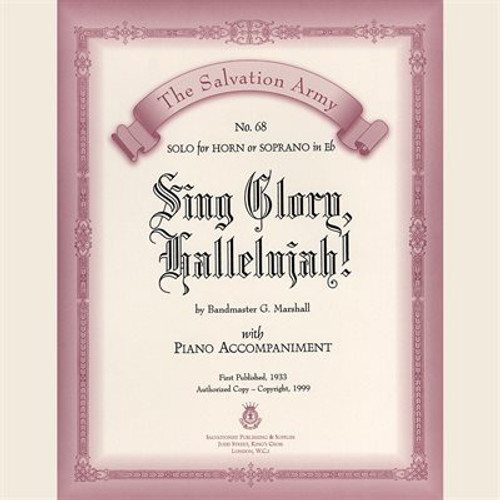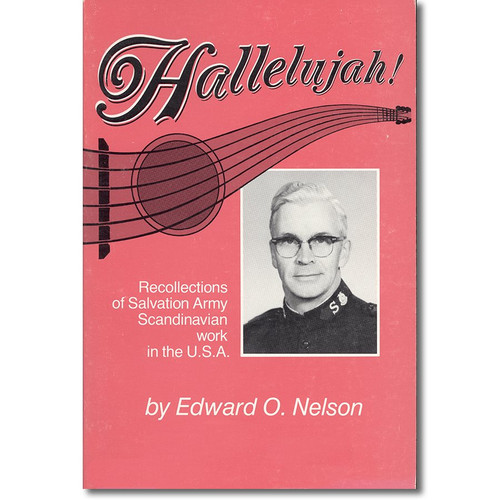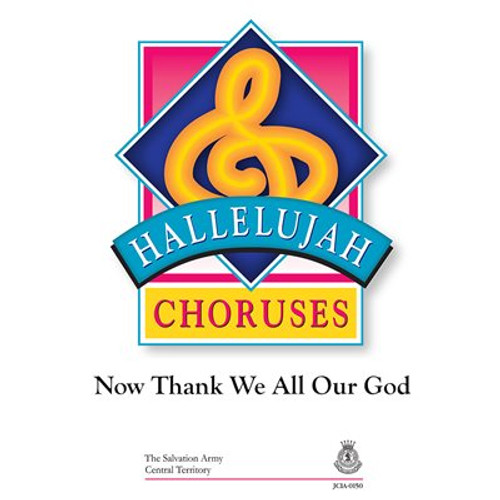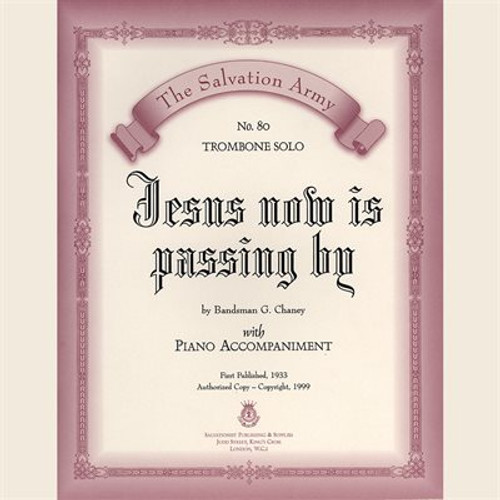Product Description
And Now, Hallelujah!
Caprice
Composer: Andrew Mackereth
Produced by The Salvation Army - Central Territory
Score Sample
NotesThis is a digital product. After purchasing you'll be able to download it from Account -> Orders -> Select order number
Score Notes
Notes:
Comments by Staff Bandmaster William Himes, Music & Gospel Arts Secretary, USA Central Territory
By definition, a caprice is a fanciful and lively work which does not strictly adhere to any specific form. This exciting and colorful piece certainly lives up that expectation. Bands will find the technical challenges to be well worth their effort.
Bars 7-15: Note the metric grouping of the 10/8 time signature: 3+3+2+2. Percussion and horn sections are the foundation of this asymmetrical meter. Note that the last two beats of bar 15 are the exact tempo of the 3/4 meter in the following bar.
Bars 16-42: Even with the bright tempo, this waltz-like section should be light and graceful. At bars 24-30 strive for clarity and balance in the interplay between soprano, solo cornet, 1st and 2nd cornet and 1st and 2nd trombones. The 'O boundless' motif in solo cornets at bars 39-42 transitions back to the 10/8 meter at bar 43.
Bars 43-56: This dance-like section serves as a rhythmic ostinato to theme fragments appearing in flugel, 1st and 2nd cornets and 1st and 2nd baritones. Balance will be achieved with the rhythmic parts playing with a detached style and melody parts playing with a sustained style.
Bars 74-138: Flugel and solo horn introduce this delightful Celtic section with a strong pulse on every downbeat. At bar 98 the euphoniums and basses take up the melody with tom-toms providing helpful support. The melody is tossed from section to section, leading to a percussion break at bar 139.
Bars 139-146: Even with the expanded use of percussion in contemporary brass band repertoire, it is recognized that some bands might not have all of the percussion instruments called for in this eight-bar feature (4 timpani, 3 toms, xylophone). Hence, the option of a cornet feature is provided (in cues) while utilizing the percussion at hand. Another performance option would be to make a cut from 139 to 147.
Bars 147-166: The music transitions to a grandiose statement of the principal theme at bar 155, followed by a brief accelerando back to the festivities at bar 167, ending with a flourish. Be sure to give thorough attention to the final two bars to assure rhythmic precision from top to bottom.
Program Note: Written to commemorate the twenty-fifth anniversary of Norridge (IL) Citadel in 2008, this lively work features General William Booth's song, "O Boundless Salvation," otherwise known as "The Founder's Song." The music expresses praise for a victorious past and hope for an exciting future as stated in the final verse: "And now, hallelujah! the rest of my days shall gladly be spent in promoting his praise."
Program Note:
This colorful selection uses three songs of contrasting idiom to portray a progression of the human condition from despair to triumph:
Although this is a more extended work (approximate duration: 9:00), the inclusion of optional introductions and endings provides added usefulness of presenting singular performances of these three songs as follows:
Sometimes I feel like a motherless child: Beginning to optional ending at bars 39-40.
Reach out and touch: Bar 42 to optional ending at bars 110-113.
Storm the forts of darkness: Begin with snare drum roll (can be a pause) one beat before 117. Play to end as written.
Program Note:
This beautiful setting for solo trombones and band of the folk song O Waly, O Waly is often associated with the words of Isaac Watts:Note to the Conductor:
We are pleased to present this sensitive setting as it was initially conceived for solo trombone. Written for the Amsterdam Staff Band's 2005 tour of the United Kingdom, it was later adapted as a feature for trombone ensemble, at the request of Salvationist Publishing & Supplies, where it appears in 2009 as General Series 2059.
We are grateful to SP&S for kindly giving permission to publish this solo version in the American Festival Series. Of this work, the arranger, Olaf Ritman writes: "I consider this song my personal testimony."
Beginning to bar 12: The accompaniment, particularly at the opening and closing of the piece, is atmospheric, with suspended muted chords supporting the rubato trombone solo. The judicious use of percussion (chimes, bass drum and suspended cymbal) will add to the color and mood. Be sure to cue the chimes at bars 3 and 6.
at bar 4, a clear downbeat cure for the bass drum will help clarify tempo following the soloist's pause. Also give attention to the muted sforzando in cornets and trombones in bar 8.
Bars 13-52: Following the ritardando at bar 12, it is essential for the conductor to establish the correct tempo at bar 13, allowing the soloist lyrical freedom and the ability to sustain long phrases as the tune begins at bar 16. The descending scale gesture at bar 39 should be measured, yet not overstated.
Bars 53-74: There is a slight slowing of tempo as soprano, flugel and horns take the theme while cornets, trombones and euphonium adding countermelody.
Bars 75 to end: Returning to the opening tempo, it will again be helpful to give clear cues for the chimes, bass drum and triangle from bars 75 to the end.
[Note: This solo can be heard on the Chicago Staff Band recording,Kurios, performed by Brett Tolcher]
Program Note:
The tune Randolph, by preeminent English composer Ralph Vaughan Williams was first published in 1906 as a setting of Jeremiah Rankin's hymn, of which the first verse reads:
Note to the Conductor:
William Gordon's stunning four verse setting of Randolph progresses from the quiet simplicity of unison cornets and with each succeeding verse builds to a magnificent organ-like finale.
Gratitude is expressed to the publisher and copyright holder, Oxford University Press, for granting permission to publish this brass setting in the American Festival Series.
Beginning to bar 9: A ceremonial snare drum roll is the sole accompaniment to the cornets opening unison rendering of the tune.
Bar 10-17: The mellow instruments (flugel, horns, baritones and euphoniums) provide a beautiful change of color here with 2nd horn, baritones and euphonium seamlessly adding harmony.
Bars 18-26: A two beat snare and bass drum roll signals the entrance of the cornets and trombones in a more brilliant third verse setting. Here the bass trombone is essential (cued in Eb bass). Bring out the rising soprano cornet line from bar 22.
Bar 27 to end: A dramatic percussion roll precedes the "open pipes" organ like sounds of the final verse at bar 27. Be sure to observe the swell in bar 30, followed by a dramatic decrescendo before building to the final climatic chords. Avoid any tendency to overblow while striving for the full sonorities of this majestic finale.
[Note: this setting is especially effective when performed as a benediction "in the round" with players grouped by sections surrounding the audience.]







